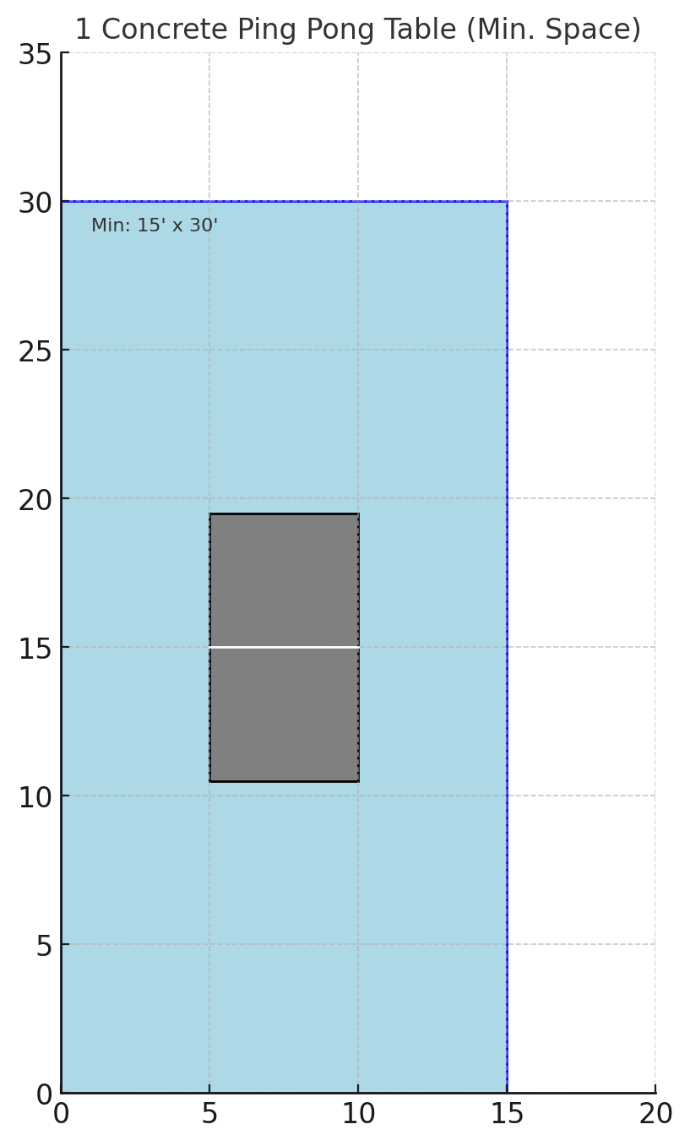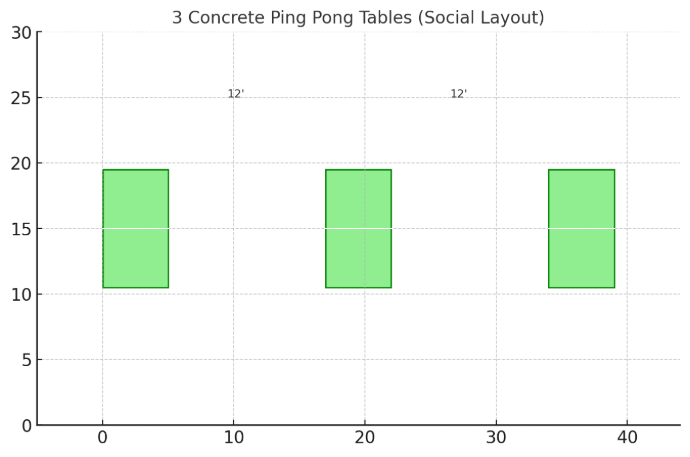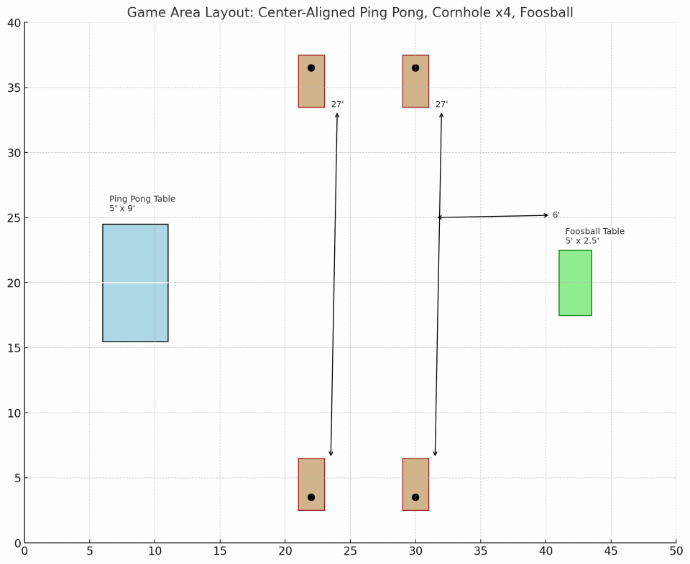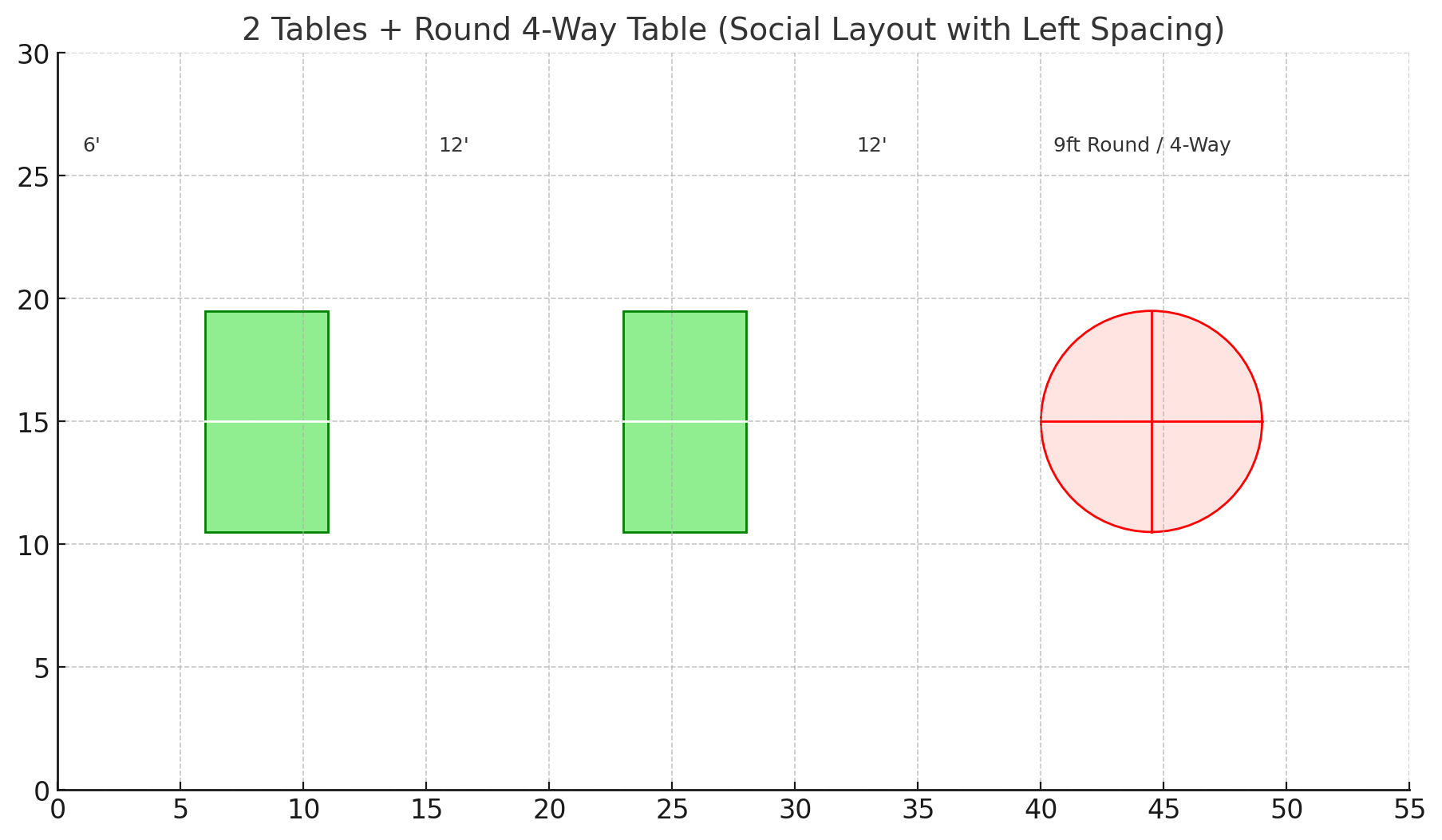How Should You Design an Outdoor Concrete Ping Pong Table Play Area?
Designing an engaging, durable, and safe outdoor ping pong space takes more than just dropping a table on a slab. Whether you're working on a city park, apartment complex, HOA common space, or school courtyard, the right layout can transform a simple concrete ping pong table into a hub of laughter, exercise, and real community interaction. So how should you design a concrete ping pong play area that people will actually want to use?
Let’s dive into the best practices and dimensions, with safety and usability front and center.
Start with the Basics: Space Requirements
For a single ping pong table, we suggest a space 15 feet wide by 29 feet long. That’s 5 feet of clearance on each side of the table and 10 feet at each end. If you’ve ever tried to return a wild lob while backpedaling, you know those 10 feet are not just for show—they’re essential for safe, enjoyable play. Site considerations sometimes require adjustments to the total play area.
Ideal recreational space, especially for more advanced players or mixed-age groups, bumps the end clearance to 15 feet, and side clearance to 7 feet. That gives players the freedom to move and keeps spectators (and their iced coffees) out of the danger zone.
For reference, the official Olympic table tennis play area is 46 feet long by 23 feet wide, which might be a bit ambitious for your local park, but it shows how much room serious players can use when the game heats up.

What About Multiple Tables?
Concrete ping pong tables are built to last, so designing for just one might sell your space short. Two or more tables not only multiply your playing capacity but also create a shared activity zone that encourages group play and conversation between matches.
When planning a multi-table layout:
- Use the same 29-foot end-to-end rule per table.
- Tables should be placed at least 10–12 feet apart side-to-side to allow room for play.
- Keep walkways wide and clear, allowing players and bystanders to move safely and freely.
A cluster of tables turns a flat pad into a social nucleus. Think of it as building a playground for grownups—with paddles instead of monkey bars.

Safety First: The Ground Game
A durable concrete game table deserves a safe and smart foundation. Here’s what to consider:
- Flat but draining: The surface should be level for play but graded enough to allow for water runoff.
- No tripping hazards: Steer clear of adjacent curbs, steps, uneven patches, or large expansion cracks.
- Safe surfaces: Concrete or even existing asphalt makes a great play surface. We have seen great installations on paver blocks and even compacted decomposed granite. Stay away from grass installations as the grass will be worn down quickly by play.
NOTE: Sites should take into consideration high and constant winds. Most area's have a breeze or breezy days and are playable. High winds that are consistent such as at some beach locations could effect the playability of a concrete ping pong table play area.
Mix It Up: Adding Other Concrete Games
While ping pong may be the star of the show, surrounding it with other concrete games can make your play area even more inviting. Some great complementary additions include:
- Concrete Cornhole – America’s favorite backyard game, now weatherproof and ready for daily use.
- Concrete Ladderball – Simple and hilarious, this game works well for mixed ages.
- Concrete Chess Tables – Great for quiet thinkers, lunch breaks, and friendly rivalry.
- Concrete Foosball Tables – Great for pairs, groups, and stress relief after a long Zoom call.
These additions create natural gathering points where kids, parents, and retirees alike can find their favorite way to play.

Make It Memorable: Add a Round 4-Way Ping Pong Table
Want to draw a crowd? Install a round 4-way concrete ping pong table. It’s durable, unexpected, and downright fun.
The rules are flexible, the laughter is contagious, and it invites playful chaos in the best way. Perfect for apartment complexes and schools where energy is high and everyone wants a turn.
A circular ping pong table also increases the age inclusivity of your space—kids and adults can mix it up more easily when the game is more lighthearted than competitive. That diversity of play keeps people coming back.

Community That Stays and Plays
Concrete ping pong installations aren’t just about recreation—they’re about building moments. They give people of all ages a reason to hang out longer, interact with neighbors, and even meet someone new.
In one memorable case, a ping pong enthusiast who started playing on a Stone Age Concrete Games table at his college housing complex went on to compete in regional tournaments. He traced his entire passion back to that solid table where he first picked up a paddle after class.
When you install outdoor ping pong thoughtfully, you’re not just placing furniture. You’re planting seeds for community.
Summary: What to Remember
- Minimum space for 1 table: 15' wide x 29' long
- Ideal recreational space: 19' wide x 39' long (or more)
Multi-table spacing: 10–12 feet between tables
- Surface: Flat but with good drainage
- Safety: Avoid stairs, curbs, and tripping hazards nearby
- Extras: Add concrete foosball, chess, cornhole, or a round 4-way table
- Result: A weatherproof, low-maintenance play space that people of all ages will use, love, and remember
Concrete is forever—and so are the connections it builds.
CONTACT US for more information
Return to HOME